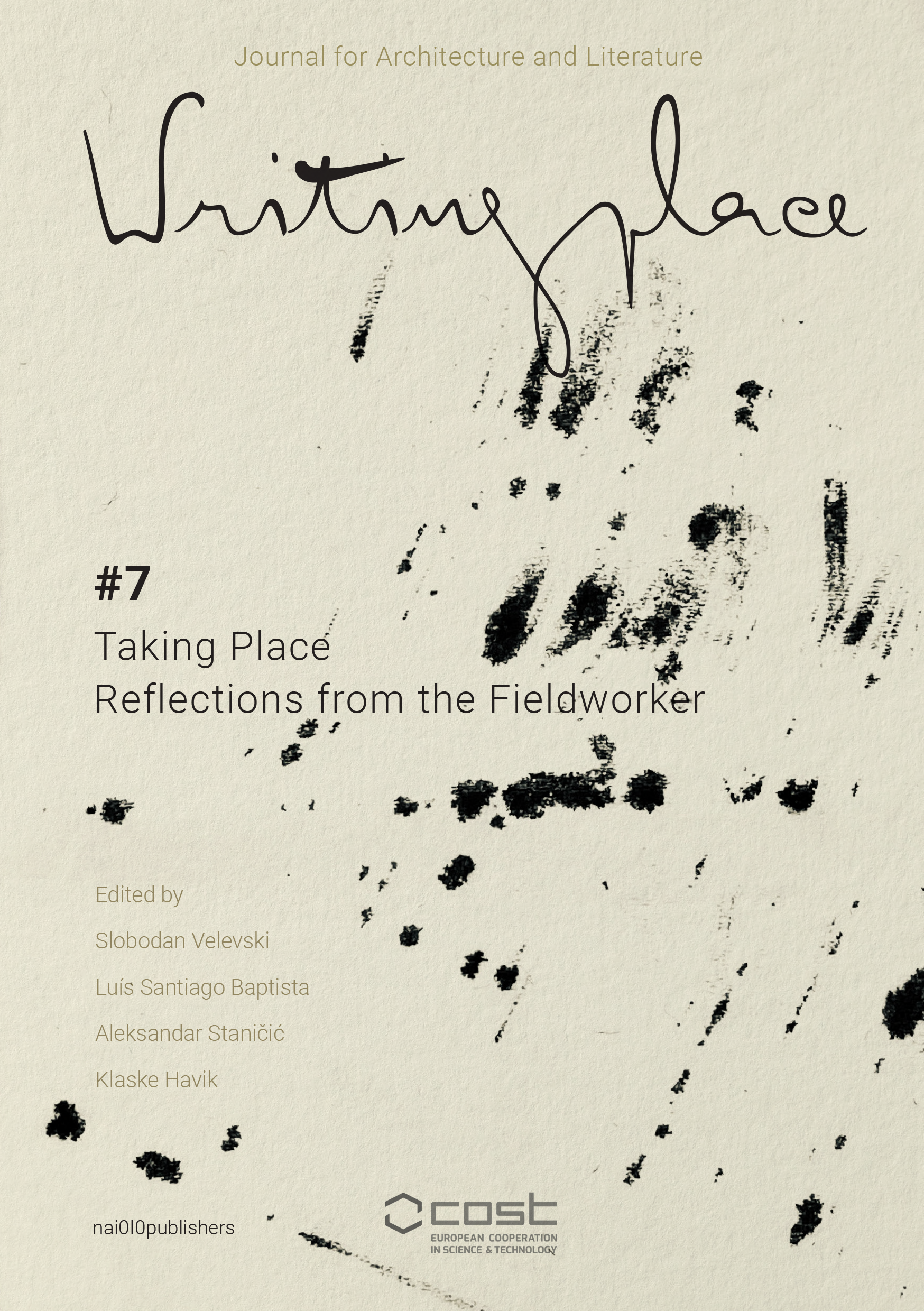Dirty Work
DOI:
https://doi.org/10.7480/writingplace.7.6372Keywords:
Dirt, dirty work, fieldwork, worldmaking, matter, impurity, place, environment, debris, phantoms, bricolage, remix, oil, oil field, paintingAbstract
There is a tradition in architecture and art – proclaimed by Leon Battista Alberti, Adolf Loos and others – to refrain from dirt. According to such an understanding, architectural and creative thinking and making are conceived as an intellectual and pure endeavor. Dirt, impurity, contamination are, however, inevitable when firmly grounding architecture and other ways of worldmaking in our complex reality. I therefore advocate “dirty work” as a modus operandi that is more suitable for the enormous challenges that we are facing. Dirty work demands active material and bodily engagements with places and environments instead of idealizations and abstractions from a distance. It relies on fieldwork as a practice of working in, with and through the field, its materiality and the immaterial relations that it is made up of.
References
Mary Douglas, Purity and Danger. An analysis of the concepts of pollution and taboo, London/New York, 1966.
Richard Fardon, ‘Purity as danger: “Purity and Danger revisited” at fifty’, in: Robbie Duschinsky, Simone Schnall, Daniel H. Weiss (eds.), Purity and Danger Now: New Perspectives, London/New York, 2016, pp. 23-33.
Michael Hirschbichler, ‘Drecksarbeit / Dirty Work’, Review Summer 2022 – IKA, Academy of Fine Arts Vienna, (2022), p. 20.
Adolf Loos, ‘Plumbers’, in: Nadir Lahiji, D.S. Friedman (eds.), Plumbing: Sounding Modern Architecture, 1997, pp. 15-20.
Downloads
Published
How to Cite
Issue
Section
License
Copyright (c) 2023 Michael Hirschbichler

This work is licensed under a Creative Commons Attribution 4.0 International License.



